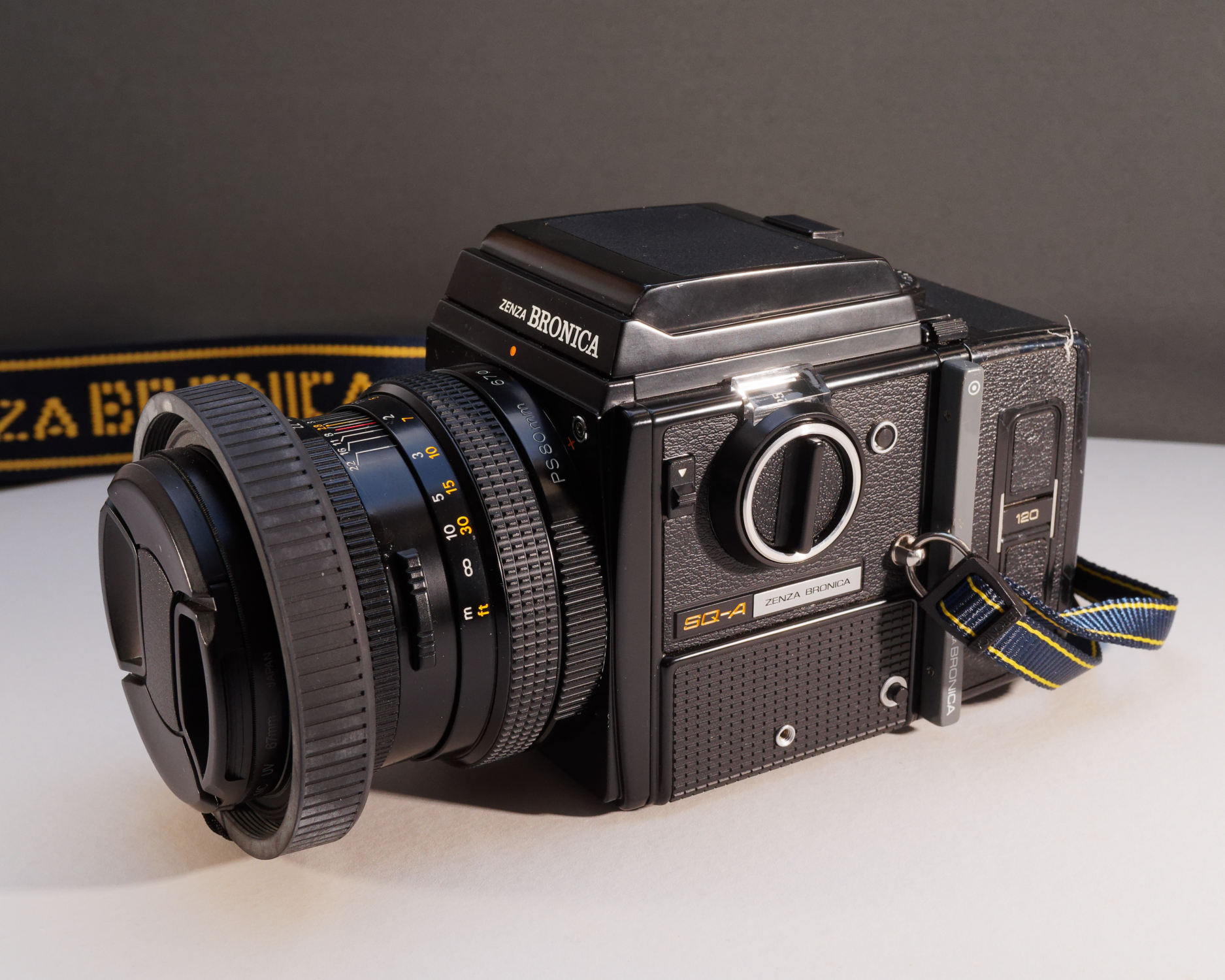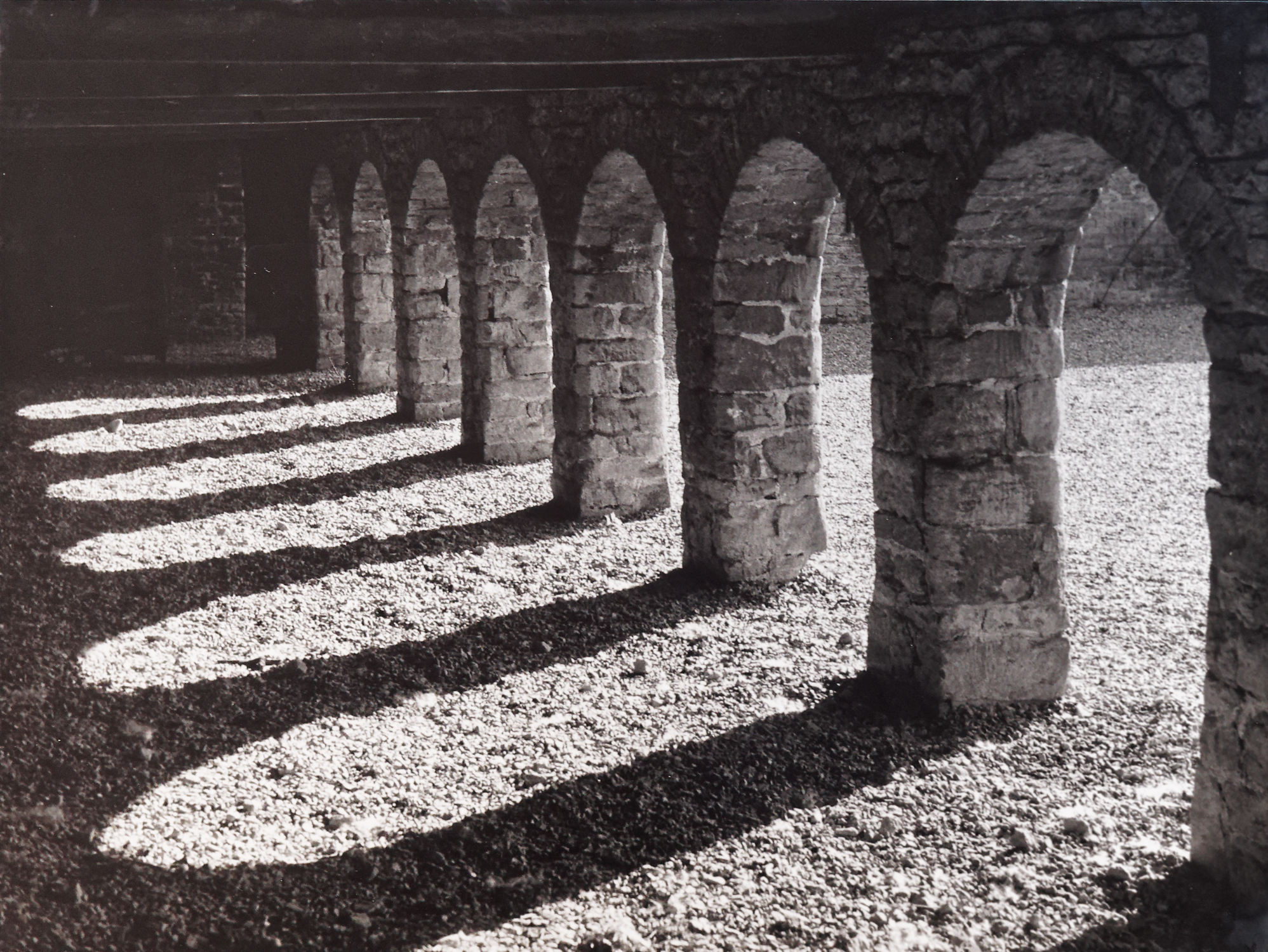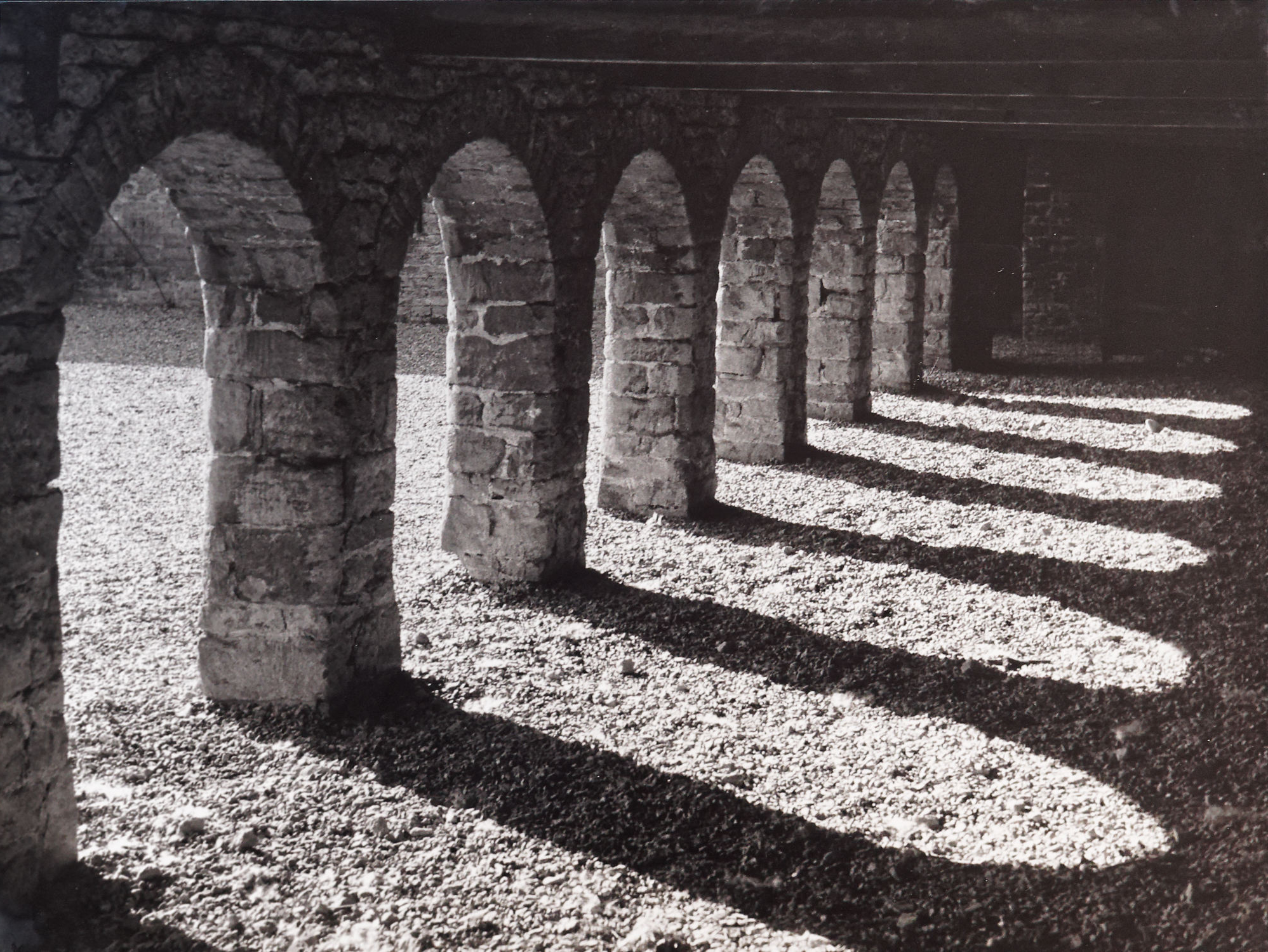Obsession with taking stunning photographs
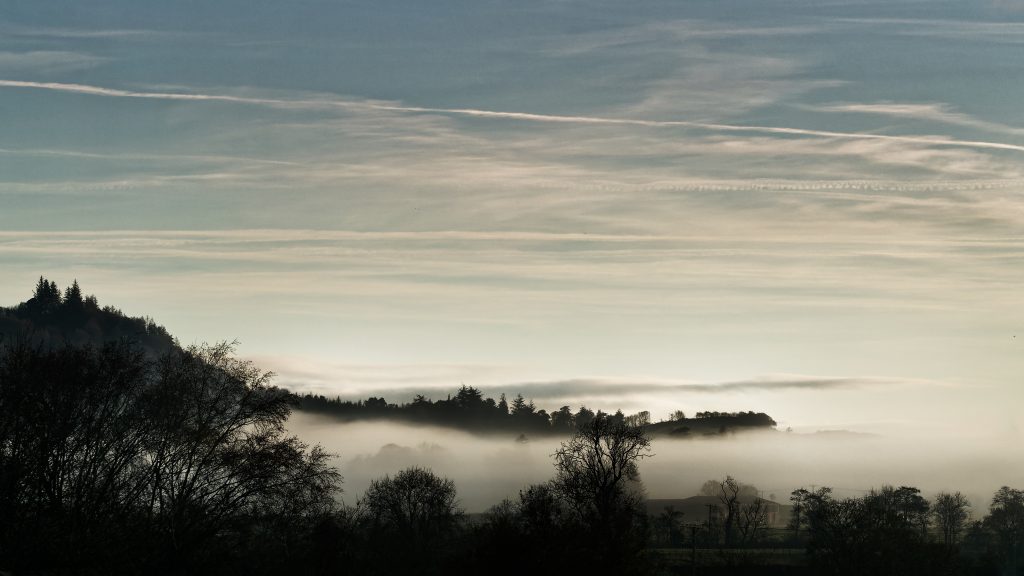
I have an obsession with taking stunning photographs. If only I could achieve it. What I need is better equipment, more lenses. filters, a flash, then I can do it. Yes, I too can get those great sunsets, those wonderful mountain shots, catch that smile, that movement, that close up of a wild eagle I have been craving.
Well, it’s nice to dream. I have been a bit of a dreamer all my life, maybe, just maybe, I have finally started to achieve some of those dreams. Let me tell you a little about how I got here and give you some clues as to how you can be a photographic achiever.
How my obsession began
My first camera
I became enthusiastic about photography in my teens when I was able to lay my hands on my grandparent’s Box Brownie camera and contact printing frames (see aside). That was back in the 1960s before digital photography had even been thought of. The Brownie was the ‘Instant camera’ of the day. It takes a 120 roll film; has a fixed, poor quality, lens; a single shutter speed and two aperture settings. There are two viewfinders, enabling the camera to be used in portrait or landscape mode. But it is near impossible to see anything through the viewfinders. So basically the camera was pointed in the direction of the subject and the shutter clicked in hope that something good would be captured.
Below right is an example of the quality of image I was getting, bear in mind that the image is now a good 55 years old so it has survived well.
CONTACT FAMES
Contact frames are used for film photography. The frame is similar to a picture frame. The negative is sandwiched together with photographic paper with the negative on top. This is done in the dark and then it is exposed to a short burst of light. The paper is then processed to produce a print the same size as the negative.
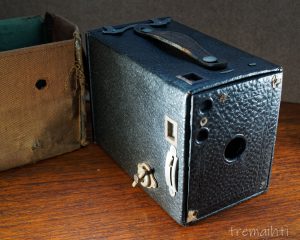
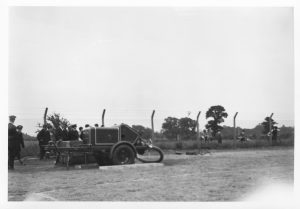
Box Brownie. The picture shows a group of firemen about to demonstrate the use of a large water pump.
I discovered how to use my acquisitions, and armed with the appropriate chemicals I produced some very small prints. Watching a black and white picture appear on the paper whilst it sits in the developer is a truly magical moment. To be honest I think I found the processing of the print more interesting than the picture taking itself.
I had no tuition and no money to invest in this fascinating hobby. As I entered my 20s I was able to access photographic magazines and these gave me a lot of inspiration. They also gave me a great desire to own the coveted Leica and/or Hasselblad. Unfortunately that aspiration was akin to me wanting a Rolls Royce today; it was never going to happen.
My next cameras
I managed to stretch my finances to the poor man’s SLR, the all too common Zenit E. A heavy, clunky camera lacking kudos, but capable of producing good quality pictures if used correctly. Some years later I moved on to a second-hand Olympus system, using the wonderful original OM1 35mm film camera.

Years later I managed to stretch to a second-hand Bronica SQA. This was possible because prices plummeted as digital took hold. Little good it did me as film and developing prices rose and all attention turned to the digital world. I hope that one day I can restart using it again.
Still in my 20s, I joined a camera club. It was a great opportunity to meet with fellow minds and get some clues as to how to take good pictures. I even managed to get second place in one of their competitions. I would have won if only I had turned my negative around and printed my picture back to front, this is a matter of composition. Use the arrows to change the picture below from the original to a flipped version. Which way do you think is best?
Equipment Obsession
One of the problems with photography is the obsession with equipment. How often have you heard (or even said) that phrase ‘Wow what a great picture, what camera did you use?’ The implication being, intended or not, that it was the equipment that made the picture rather than the photographer.
Photography magazines help to promote this idea by always stating what camera and lens were used to obtain the pictures they publish (in the days of film the type of film was also listed). Of course, if they don’t do so they will no doubt get a flood of letters insisting that they should provide the information.
The trouble is that we end up thinking that if we are to produce similar ‘wow factor’ pictures we must also have that super-duper camera equipment. Well, I have some good news and some bad news for you. First the good news
No need for fancy equipment.
You do not need all that fancy equipment to get great pictures. Save your money. Today’s mobile phones are capable of producing technically very good pictures. Even some pro photographers use mobile phones to produce large prints for their clients.
As I write this article Tim Clinch, a professional photographer writes a regular article in the Black and White Photography Magazine called ‘Smart Guide to Photography.’ In his articles, he demonstrates the ability of mobile phone cameras. He shows that they are capable of producing great pictures which can be printed to a large size.
It is fair to say that a full-frame camera can technically out-perform the mobile phone. (Read about camera sensors here). You will also find features on good system cameras that you will not get on a phone, well not just yet anyway. So what’s the bad news?

Great pictures need hard work
Getting great pictures is down to you. That means a lot of hard work. Taking pictures daily, understanding the effects of composition and changes in lighting, travelling widely, going out in all weathers, upsetting the family, becoming a loner, total dedication. Maybe I exaggerate a little – you might not upset the family.
Some people just stumble upon a great picture opportunity. A fox wanders across your back garden just when you happen to be outside with your camera. Lightning strikes across the sky at night just as you are pointing the camera at the sky. A great bear wanders through the forest whilst you are out for a walk. Any number of things can happen before your very eyes, which potentially could provide a great picture opportunity. In practice, you may have a better chance of winning the lottery.
Even those people who do stumble on those opportunities are normally ready for such an occasion. That means they know their camera so well that their response becomes automatic.
I wish I could say the same about my skills. Maybe it is old age, or more likely just a lack of practice, but I have to stop and think about what I am doing. I have progressed a tremendous amount since my early years and I continue to take pictures as often as possible. But family life has to take priority and I would prefer to stay married. My wife takes pictures too, in fact, she will often take more pictures than me, mainly because she just keeps clicking whilst I stop to think about what I’m doing. Who takes the better pictures? I dare not say.
Example Photographers
Paul Colley
Paul Colley (Instagram – website ) won the 2019 British Wildlife Photography Award with his picture ‘Contrails at dawn’; it features a bat about to catch an insect. He didn’t just stumble across this opportunity, rather he first conceived the idea then spent a year trying to capture the image, he said
“fellow photographers encouraged imaginative experimentation and taught me to anticipate setbacks as a reasonable price for ultimate success. In hindsight, I experienced a huge gradient of emotion. There were the lows felt during months of long, cold and exhausting dusk-to-dawn sessions, sometimes waist deep in water and often without getting a single usable image. And then the natural highs of those light bulb moments, when new ideas blossomed”
https://www.bwpawards.org/winners2018
Now that is dedication.
Steve Simon
In his book ‘The Passionate Photographer’ Steve Simon suggests we need to take 10,000 pictures before we are ready to excel, but those pictures must be purposeful and thought about. I have taken pictures at cycling events and bird flight displays using the high-speed setting on my camera. After a two hour stint, I could easily walk away with 2,000 pictures, but they are all similar and most unusable. I may get one or two decent pictures, but it would be right to say that any improvement in my photography from those sessions was down to one or two good pictures and not the total 2000
Limit your equipment use
Use whatever camera equipment you have. If you have more than one camera choose one to work with. If you have more than one lens choose just one. Go through all the settings of your camera and lens before going out to take photos. This includes mobile phones if that is what you plan to use.
I don’t have an expensive mobile and I only occasionally use it to take photos. I had it for a couple of years before I realised that I could set the exposure, focus, and white balance manually. It slows down the picture taking, but it makes you think more about what you are doing and aids the understanding of picture-making. Check out the settings on your phone’s camera.
Start taking stunning photographs
If you want to improve your photography and develop your obsession with taking stunning photographs, I suggest you focus on picture taking. Learn about lighting and composition, both of which I will discuss in later blogs, get those 10,000 plus pictures under your belt and then you can consider whether new equipment will aid your progress.
Most of all ALWAYS CARRY A CAMERA WITH YOU and enjoy the experience.
